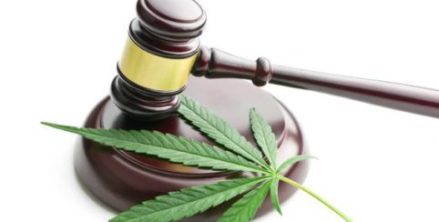California Court Strikes Down Local Restrictions on Personal Cannabis Grows – A court this month decided that the City of Fontana has gone too far in restricting personal cannabis cultivation. In June of 2017, the City of Fontana was sued over its personal cannabis cultivation restrictions. On November 2, 2018, the Court issued its decision in the case, Mike Harris v. City of Fontana, and ruled against the City of Fontana striking various provisions from Fontana Ordinance 1758 enacting section 30-7(B) of the Fontana Municipal Code.
The court threw out various City restrictions on who can obtain a personal cannabis grow permit, as well as restrictions on the physical aspects of residences that qualify for a permit. The Court also found that the required property inspections were not justified nor was the cost of the cannabis permit. The Court also ruled that the cannabis personal grow permit fees currently adopted by the Fontana City Council are disallowed, though subject to reassessment in light of the corrected Ordinance.
On November 8, 2016, California voters approved Proposition 64 (also known as the “Adult Use of Marijuana Act” or “AUMA”) which allows adults 21 and older to cultivate up to six marijuana plants inside their private residence. The state does not require a license or permit to grow the marijuana plants nor did the state adopt any personal marijuana grow regulations as it did extensively for commercial cannabis production. AUMA does, however, allow cities and counties to enact reasonable regulations to regulate cannabis cultivation for personal use. (Read more about state cannabis law at California Cannabis Law.)
The Drug Policy Alliance and the ACLU of California filed a lawsuit on behalf of Mike Harris, a Fontana resident, against the City of Fontana challenging the City’s cannabis personal grow ordinance on the ground that it is intended to effectively prevent residents from enjoying the rights granted to them by Proposition 64 (AUMA). The lawsuit argued that the Fontana ordinance makes it unreasonably difficult and expensive for residents to cultivate marijuana at their private residence as Prop. 64 allows.
As the Court stated in its decision, “The issue in this case is how far a city can restrict the category of persons who are entitled to grow marijuana plants, and the circumstances under which they may grow the plants, without running afoul of the AUMA’ s requirement that regulations be “reasonable.” The City of Fontana has gone too far.”
The Court noted that “Fontana adopted Ordinance No 1758, which defines the group of persons who may grow cannabis plants more restrictively than the AUMA’s only limitation that they be at least twenty-one years of age.” The Court found that the Ordinance “imposes onerous restrictions that bear little or no relationship to the activity supposedly being regulated.” The Court determined that “[w]hile many of the provisions in the Ordinance are reasonable, the effect of the Ordinance as a whole is not to regulate cannabis cultivation for personal use, but to stamp it out entirely.”
Consequently, the Court barred the City of Fontana from enforcing those provisions of the Ordinance which the Court found to be invalid. The Court stated that the “remainder of the Ordinance may remain, although Fontana may wish to draft a less onerous ordinance instead.”
The Court divided its discussion of the Fontana Ordinance into four sections: 1) Restrictions on Who Can Obtain a Permit, 2) Restrictions on Physical Aspects of Residences that Qualify for a Permit, 3) Property Inspections, and 4) The Cost of the Permit.
As to the Fontana Restrictions on Who Can Obtain a Permit, the Court stated:
“These restrictions on who may cultivate cannabis for personal use in Fontana are arbitrary and capricious because they disallow certain persons from doing what state law specifically allows them to do. The only restriction under the AUMA is that a person must be at least twenty-one years old. Fontana’s Ordinance, however, excludes (1) certain felons, (2) anyone with a pending Code enforcement action (e.g., violation of a property set-back requirement), (3) anyone who owes money to Fontana (e.g., an unpaid parking ticket), and (4) anyone who cannot obtain permission of a landlord. These are not reasonable restrictions, because they conflict with the broad permission granted by the AUMA and, in the case of the Code enforcement and unpaid obligation provisions, are wholly unrelated to the activity supposedly being regulated.”
Continuing with the Fontana Restrictions on Physical Aspects of Residences that Qualify for a Permit, the Court stated:
“The Ordinance imposes other unreasonable conditions as well, by restricting aspects of the physical residence where the plants may be grown to an extent that is unrelated or only tangentially related to the small amount of cannabis cultivation authorized under the AUMA.”
In finding that the City of Fontana did not justify the need for interior Property Inspections of the residences of permit holders, the Court stated:
“Once the unreasonable provisions of the Ordinance are removed, the only remaining purpose of a property inspection would be to assure that only six plants are being grown, which is the limitation imposed by the AUMA. But section 11362.1 of the AUMA provides that “no conduct deemed lawful by this section shall constitute the basis for . . . search.” If Fontana’s contemplated inspection reveals plants in excess of the six allowable plants – in other words, conduct that is not deemed lawful by the AUMA, the inspection amounts to a search that could lead to a criminal prosecution. A search warrant is required for that.”
In finding that the Cost of the Permit was not justified, the Court stated:
“Thus the cost is based on the amount of effort required to assure compliance with the onerous permit conditions set forth in the Ordinance. Since these restrictions are stricken on the ground that they are unreasonable, the cost ceases to be justified. If Fontana intends to assess an initial fee or a renewal fee in a lesser amount, it will need to reevaluate the necessary cost in light of the eliminated provisions of the Ordinance.”
To read the full court decision in Harris v. City of Fontana, go to Fontana Decision Personal Cannabis Grow.
Contact us to learn more about California state or local cannabis regulations, cannabis regulatory compliance, and cannabis litigation.

